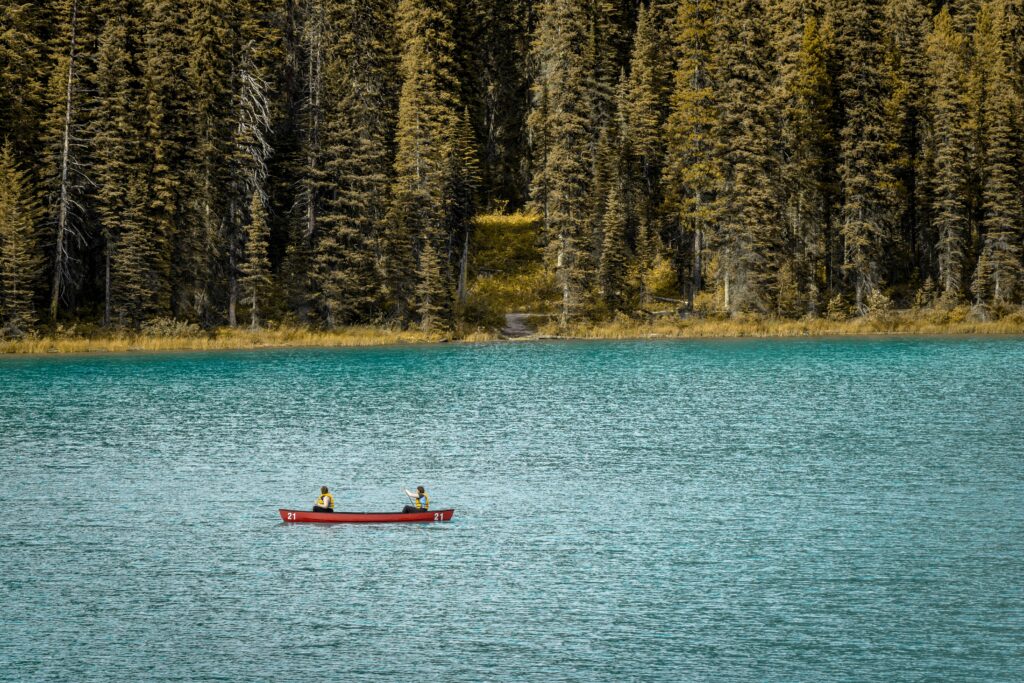Existing crude oil infrastructure can be used to make up any shortfall caused by a Line 5 closure
Toronto | Traditional territories of the Huron-Wendat, the Anishnaabeg, Haudenosaunee, Chippewas and the Mississaugas of the Credit First Nation – Contrary to claims that a Line 5 closure could trigger an energy crisis, new research shows that this is not the case. A report commissioned by Environmental Defence has found that viable alternatives exist for meeting Ontario and Quebec’s crude oil demand needs in the event of a Line 5 shutdown. This analysis, conducted by an energy industry expert with decades of experience in the oil and gas sector, estimates that with a planned shutdown of Line 5, any gas price changes would essentially go unfelt by consumers, causing an increase of only 1.8 cents CDN per litre.
Environmental Defence’s ultimate goal is for Canada to transition away from fossil fuels altogether. However, in the short term, crude oil demands must continue to be met. This new research shows that the dangerous Line 5 pipeline can be shut down without disrupting Canada’s energy supply. Other key findings of the report include:
- A key potential alternative to Line 5 is Line 78, another Enbridge pipeline. As it stands today, the Line 78 pipeline is not being used to its full capacity and can already account for some of the shortfall that would be caused by a Line 5 closure.
- Line 78 was designed to have an even greater capacity than it currently does. If Line 78 is upgraded to the capacity it was designed for, it could make up the majority of any shortfall caused by a Line 5 closure. This could be done without making changes to the pipeline itself, but rather by making upgrades to pumping facilities.
- Any remaining shortfall could be made up by existing rail capacity and/or tankers. This would require roughly 2-3 additional trains per day and/or roughly one additional marine tanker on crude oil routes that are currently in use.
- In terms of Natural Gas Liquids (NGLs), alternative sources available in nearby regions could make up for any shortfall caused by the closure of Line 5.
“Enbridge claims that a Line 5 closure would trigger an energy supply shortage. But this analysis shows that this is simply not true. This 69-year-old, deteriorating pipeline is at an increased risk of rupture, and it runs right through the heart of the Great Lakes which hold 84 per cent of North America’s freshwater. A spill would be devastating and could engulf over 1100 kms of shoreline. A planned and swift closure is both feasible and necessary,” said Michelle Woodhouse, Water Program Manager at Environmental Defence.
“When it comes to Line 5, the Canadian government needs to prioritize the protection of the Great Lakes, our greatest freshwater source. Canada also has a duty to uphold Indigenous treaty rights. This includes treaty rights being exercised by Anishinaabeg peoples calling for the shutdown of Line 5 from across Wisconsin, Michigan, and Ontario, to protect their territorial lands, waters, and ways of life,” Woodhouse stated.
The Canadian government has filed an amicus brief in support of the pipeline and has evoked a 1977 treaty to attempt to block a closure. However, the government has not done a proper assessment of the impacts of closing Line 5 or what alternatives are available. Environmental Defence commissioned this analysis because, while we recognize the clear environmental threat posed by Line 5, we also appreciate the need for crude oil in the near term. This new analysis shows the public and decision-makers that we do not have to choose between protecting the Great Lakes and meeting demand for crude oil.
“Without a doubt we need to get off fossil fuels and stop moving oil through our environment, but unfortunately we still have crude oil demands to meet in the present day,” added Woodhouse. “The status quo needs to change and a just transition needs to happen. Canada has an obligation to advocate in the best interest of Canadians which means protecting our most precious freshwater resource and ensuring present day oil needs are met.”
A full summary of the report’s findings can be viewed here: https://environmentaldefence.ca/report/closing-line-5/
ABOUT ENVIRONMENTAL DEFENCE (environmentaldefence.ca): Environmental Defence is a leading Canadian environmental advocacy organization that works with government, industry and individuals to defend clean water, a safe climate and healthy communities.
– 30 –
For more information or to request an interview, please contact:
Lauren Thomas, Environmental Defence, lthomas@environmentaldefence.ca, 647-687-2687






